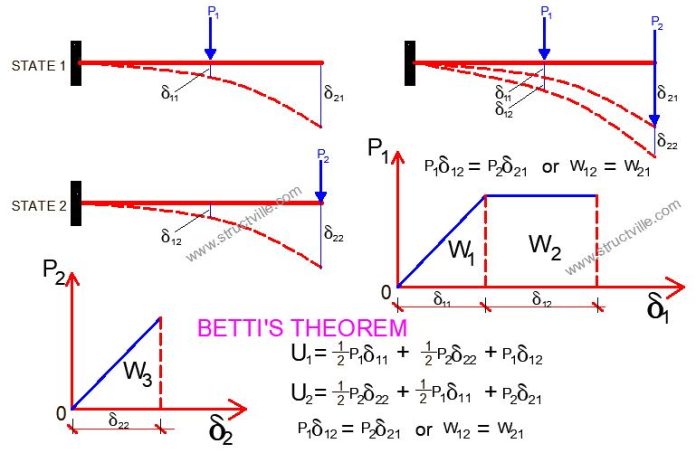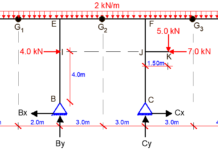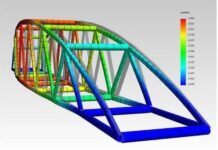Betti’s Theorem, also known as the Maxwell-Betti Reciprocal Work Theorem, is a fundamental principle in structural analysis. Betti’s theorem of reciprocal works states that in any elastic system, the work performed by a load of state 1 along displacement caused by a load of state 2 equals the work performed by a load of state 2 along displacement caused by a load of state 1.
In other words, it states that for a linear elastic structure subjected to two sets of forces, the work done by the first set of forces in acting through the displacements produced by the second set of loads is equal to the work done by the second set of loads in acting through the displacements produced by the first set.
Reciprocal theorems reflect the fundamental properties of any linear statistically determinate or indeterminate elastic systems. These theorems find extensive application in the analysis of redundant structures.
Proof of Betti’s theorem
Let us consider an elastic structure subjected to loads P1 and P2 separately; let us call it the first and second states (Figure 1). Set of displacements Δmn for each state are shown below. The first index m indicates the direction of the displacement and the second index n denotes the load, which causes this displacement.

Thus, Δ11 and Δ12 are displacements in the direction of load P1 due to load P1 and P2, respectively, Δ21 and Δ22 are displacements in the direction of load P2 due to load P1 and P2, respectively.
Let us calculate the strain energy of the system by considering consequent applications of loads P1 and P2, i.e., state 1 is additionally subjected to load P2. The total work done by both of these loads consists of three parts:
- Work done by the force P1 on the displacement Δ11. Since load P1 is applied statically (from zero to P1 according to triangle law), then W1 = P1Δ11/2.
- Work done by the force P2 on the displacement Δ22. Since load P2 is applied statically, then W2 = P2Δ22/2.
- Work done by the force P1 on the displacement Δ12; this displacement is caused by load P2. The load P1 approached its maximum value P1 before the application of P2. The corresponding P1–Δ1 diagram is shown in Figure 1, so W3 = P1Δ12.
Since potential energy U equals to the total work, then;
U = ½P1Δ11 + ½P2Δ22 + P1Δ12
On the other hand, considering of application of load P2 first and then P1, i.e., if state 2 is additionally subjected to load P1, then potential energy U equals;
U = ½P2Δ22 + ½P1Δ11 + P2Δ21
Since strain energy does not depend on the order of loading, then the following fundamental relationship is obtained;
P1Δ12 = P2Δ21 or W12 = W21
Work W12 can be positive or negative. It is only zero if and only if the displacement of the point of application of force P1 produced by force P2 is zero or perpendicular to the direction of P1.
A Simple Analogy
Imagine two people pushing against each other. Person A pushes person B with a certain force, resulting in a displacement of person B. Simultaneously, person B pushes person A with an equal and opposite force, causing a displacement of person A. Betti’s Theorem states that the work done by person A on person B is equal to the work done by person B on person A.
Implications and Applications
At its core, Betti’s Theorem establishes a reciprocal relationship between loads and displacements in a linear elastic system. This principle has far-reaching implications in structural engineering:
- Influence Lines: It is instrumental in constructing influence lines, which are essential for analyzing indeterminate structures under moving loads.
- Boundary Element Method: This numerical method, widely used in engineering, is based on Betti’s Theorem.
- Analysis of statically indeterminate structures using force method: It simplifies the calculation of influence coefficients when using the force method to analyse statically indeterminate structures.
- Structural Optimization: It contributes to the design of compliant mechanisms through topology optimization techniques.
Limitations
It is important to remember that Betti’s Theorem is applicable only to linear elastic structures. This means that the material of the structure must obey Hooke’s law, and the deformations must be small. In conclusion, Betti’s Theorem is a powerful tool for engineers and scientists, providing a foundation for understanding and analyzing the behaviour of structures under various loading conditions.










